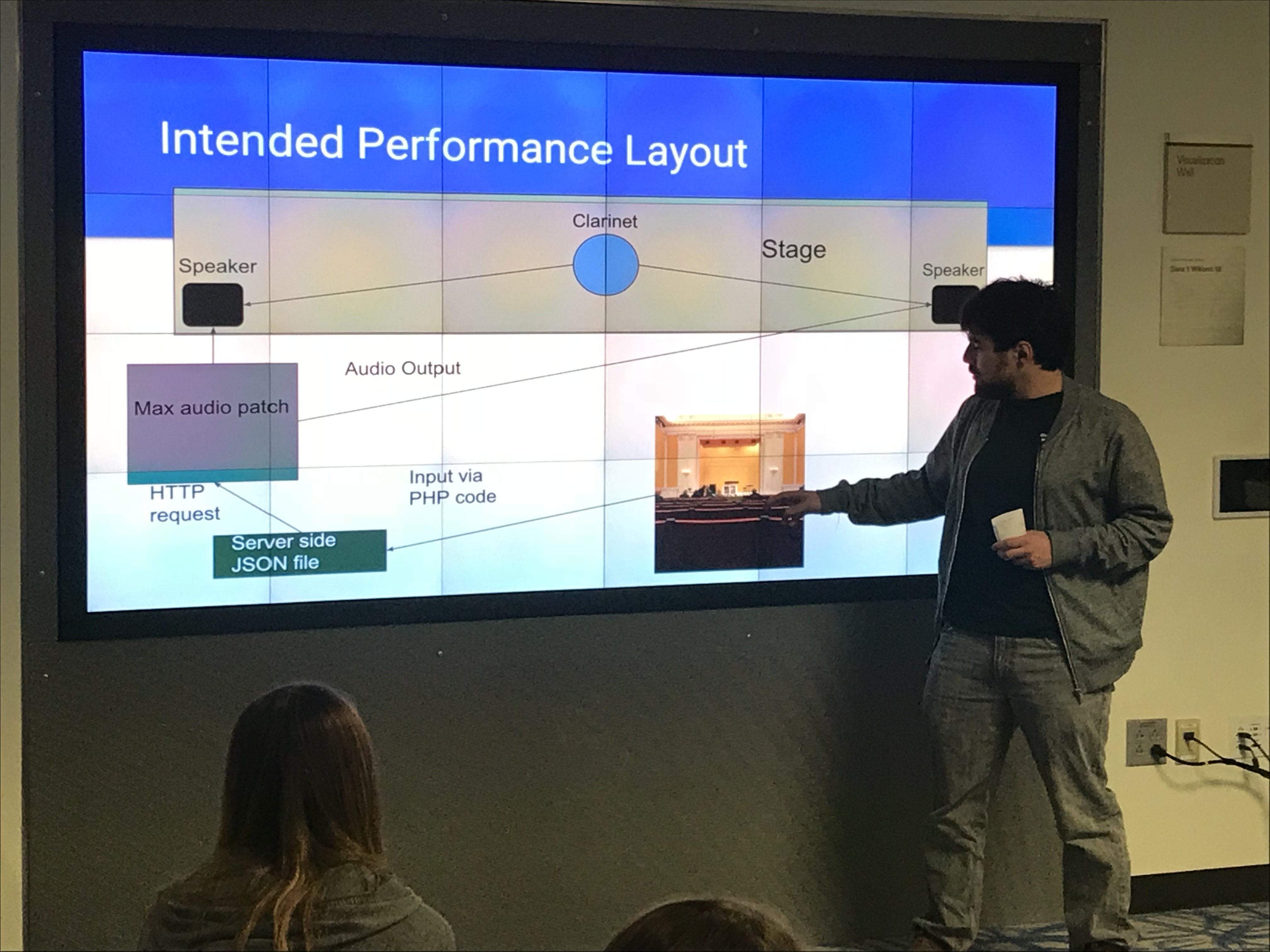
As a sophomore, I applied and was accepted to the Ammerman Center for Arts and Technology, one of the five academic centers on campus that provides resources to students and faculty doing interdisciplinary work on a specific subject. This year I’m working on my Senior Integrative Project (SIP). SIPs are year-long independent studies for seniors in the College’s four center-certificate programs that culminates in a final performance or installation from each senior in the spring. My project is to develop a piece of classical music where audience members get to participate. Learn more about my journey as an Ammerman Scholar.
It wasn’t long after presenting aspects of my SIP to the College community and visitors during Fall Weekend that it was time for my next public update for the Ammerman Center of my progress. As I hinted in my post about Fall Weekend, while I felt our event went well for me, I also knew I wasn’t displaying what I was actually working on. My interactions with people on Fall Weekend were more showy than comprehensive and didn’t reflect my actual progress. For my midterm, I was given clearly defined guidelines of what to say. I found these guidelines helpful because they allowed me to stay focused on specific topics when outlining my slideshow and writing notes for it.
We presented our midterms at the Shain Visualization Wall, a large, high-resolution screen on the lower level of Shain Library. When it was my turn to speak I first delivered an overview of the background of my project—the research and personal experiences that contributed to my undertaking. Then I explained the coding processes that I had implemented to that point using a diagram; I felt this was the best way to deliver an understandable and concise overview of my work. Finally, there were a few minutes for the audience to ask me questions and give critiques about my concept.
From discussions I had afterward it seemed the explanation of my technical processes received a mixed response from the audience. I was most interested in One person who attended told me that they felt it was articulated in an overly rushed manner. I realized from this that as a result of my need to also devote time to explain the background of the project, the technical aspects may not have been clear to many people in attendance. Another attendee felt the language I used in this section was clear and understandable even to audience members lacking knowledge of the technology I was using.
Additionally, Shawn Hove, who teaches the senior seminar, gave note cards to everyone in attendance and asked them to write questions and comments for us. I received seven written responses this way. The comments were quite helpful and informative. For example, some of them asked me questions that I actually answered in my presentation, which suggests that I may not have been clear enough for some of my listeners. Others offered more probing questions about concept and execution that I continue to focus on as I progress with my work.
However, for me, the most useful part of the midterm was the opportunity to discuss outcomes of our presentations with my classmates. I related to a comment by one of my classmates about changing the medium of her project from virtual reality to an installation because she felt that virtual reality limited the number of people she could show it to, which was not the communal dynamic she was aiming for. I too am considering how to make sure my project interests a wide variety of community members, and what the communal dynamics will be given that my project requires audience participation. While the midterm was certainly a challenging and cumbersome experience, I do feel it has been a worthwhile process and that I’ve gained information both about how to explain my project and what elements I may need to focus on as I continue to develop it.